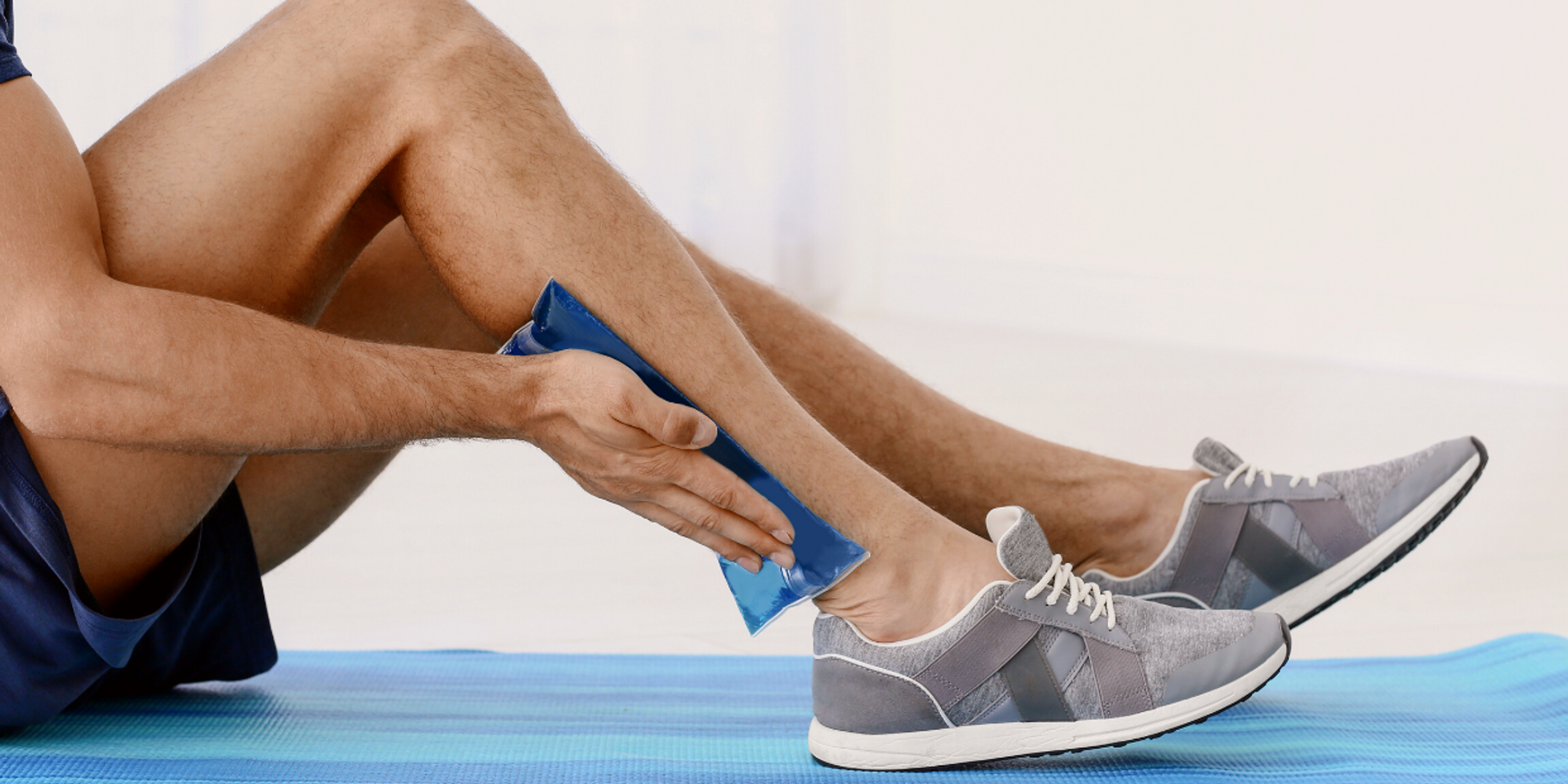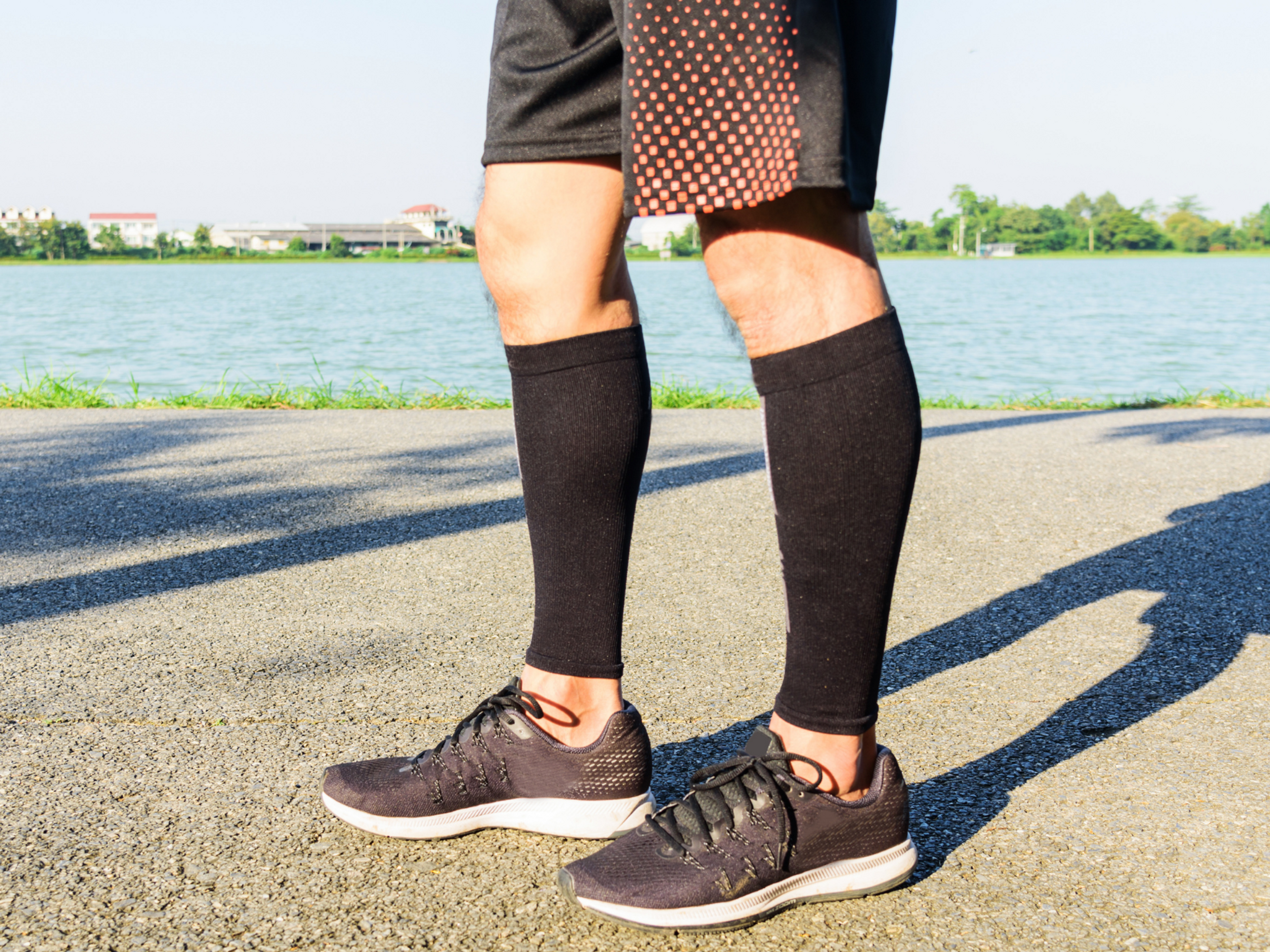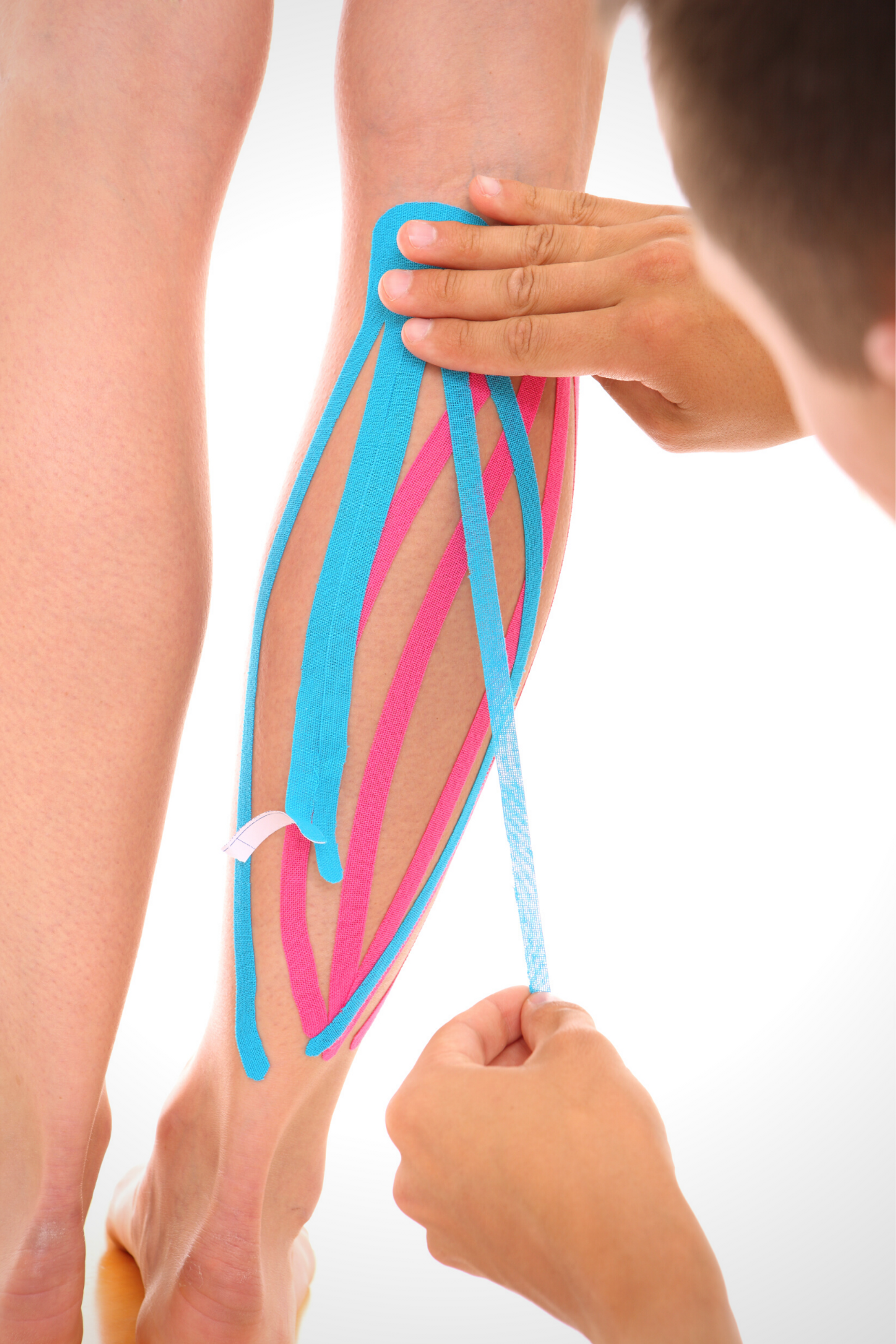Icing your calf strain. Will it really help?
So, you pushed a little too hard in your run and felt the dreaded ‘ping’ in your calf muscle. It’s been a couple of hours, the pain is getting worse, and stretching isn’t working. So, you wonder, will ice help?
Before grabbing that bag of frozen peas, there are a few aspects to carefully consider.
With calf strains, treatment is usually aimed at minimizing the damage, promoting muscle healing, and later, restoring your function. But is ice the best way to help you achieve these goals?
Let’s see.
Is ice or heat better for calf strains?
Ice is usually better than heat, but it depends on how old your calf strain injury is.
When you strain or pull your calf muscle, you tear some muscle fibers and small blood vessels. Heat causes the blood vessels to expand, increasing internal bleeding and swelling.
Ice is better for newly strained calves (fewer than 5 days old) because it helps stop internal bleeding and limits swelling. But it can also have a negative effect if you overuse it. More on this later.
You can use ice or heat (or even alternate between them) for older calf strains.
Ice can minimize your calf injury
How does ice help with this?
First, let’s look at what effects scientists have found icing has on muscle tissue.
How ice affects your calf muscle tissue
Excessive swelling increases the pressure in your calf and can significantly reduce your circulation in that area. This can starve healthy cells adjacent to the injured area of the oxygen and nutrients they need to survive, causing them to get injured (known as secondary injury).
Ice may help reduce secondary calf muscle injuries by limiting the bleeding, decreasing swelling, and taking the pressure off the adjacent tissues. This confines the tissue damage to a smaller area.
Because ice also lowers the energy demands of the tissues, the muscle cells will need less nutrients and oxygen to survive, helping them cope better with a temporary decrease in circulation.
What's the verdict?
Ice can reduce your pain
Although precise protocols for pain relief are unclear, research suggests that ice can help reduce pain associated with soft tissue injuries. And further evidence supports this idea that there’s no value in using ice for acute injuries other than the temporary pain relief and numbing effect.
Ice may reduce pain in two ways:
What's the verdict?
Ice can decrease or increase swelling
Although ice seems like a quick and easy option for reducing swelling, the supporting evidence is limited and conflicting.
For example, in one study, icing slowed down swelling in severe injuries. This is a good thing since severe swelling can prevent healing.
While in another study, ice made swelling worse. Possibly because, when cooled, lymph vessels (the waste drainage system of your body) can become more porous and cause a backflow of lymphatic fluid into the injury site. Poor lymph drainage and blood circulation resulted in more swelling in this case. This is why it’s important to not over-cool an area.
What's the verdict?
Ice can either help or delay calf strain healing
The evidence behind using ice for promoting muscle healing is weak and conflicting.
Some research suggests it may help your injury heal. At the same time, other studies conclude it has a limited role in acute injury recovery. In addition, many studies report that ice may delay healing rather than improve it.
The problem we’ve found with the available research is fourfold.
These issues make it challenging to apply research to practice.
Even though there are clearly gaps in the research, if we look closer, ice may help with muscle healing more than we think. This is how.
1. Ice can help get you moving
Severe pain can limit your mobility. In this case, ice can take the edge off your pain and get you comfortably moving again. This can help you start a calf strain rehab program or keep you on track with it.
2. Movement ramps up circulation
Early pain-free active movements get your muscles working, acting as a pump for your lymphatic vessels and stimulating your blood circulation.
Better blood and lymphatic flow mean it’s out with the “bad” and in with the “good.” Dead muscle cells, waste products, and toxins are removed. And oxygen, nutrients, and tissue-building cells are brought in.
3. When balance is restored, healing can progress
With a healthy balance in the tissues once again, your calf injury can progress smoothly from the inflammatory phase into the repair phase of healing.
What's the verdict?
How to use ice safely on your calf strain
When should you apply ice to your calf injury?
- Apply ice immediately after you strain your calf to help limit the internal bleeding and swelling.
- If your calf strain is severe or very painful, using ice for up to 1 week after injury may be useful.
- If you experience a painful injury flare-up later in your rehab, ice can help calm it down.
Avoid icing your calf just for the sake of icing
- Over-icing your calf strain may delay healing.
- Research shows that routinely icing your calf after every rehab workout may also decrease your body's strength response, making your rehab exercises less effective.
How long should you ice a calf strain?
Evidence shows icing several times a day, for short periods – 10 to 15 minutes, and no more than 20 minutes, is more effective than prolonged use. Intermittent use also reduces the risk of an icing injury (when the tissue cools too much).
Method
- Place a damp towel between your skin and the ice to prevent it from burning your skin.
- Wrap a towel around it to hold the ice in place and provide some gentle compression.
- Apply the ice for 10 minutes, then remove it for 10 minutes before reapplying it for another 10 minutes (10min on, 10min off, 10min on).
- Remove it early if it causes you pain.
- Elevating your injured area above the level of your heart can further help reduce swelling.
- Repeat twice a day (at least 2 hours apart) if needed.
There are different ways to apply ice to your injured calf. The most common options include:
- Home-made ice packs (ice blocks and water in a resealable bag or a bag of frozen peas)
- Commercial frozen gel packs (although there’s evidence that frozen peas work better than gel ice packs)
- Ice massage using an ice cup made from a paper cup filled with water and placed in a freezer (this works almost 40% better than ice packs)
Precautions and contraindications
Conclusion
Sometimes icing a calf injury does help, but, most times, it’s not necessary.
Your body has a highly intelligent built-in system that heals you on its own as long as you provide it with the correct mix of rest and exercises.
Pain and swelling after an injury are signs that this healing process has started. Often it’s best not to fiddle with it. Instead, allow your body to lead the way and let the symptoms run their natural course.
One of the best ways you can support this process is by following a progressive calf strengthening program that aligns with your phases of healing. This ensures you build strong and resilient muscles while you heal.
If you need help finding your way through your calf strain rehab, the Exakt app can help.





